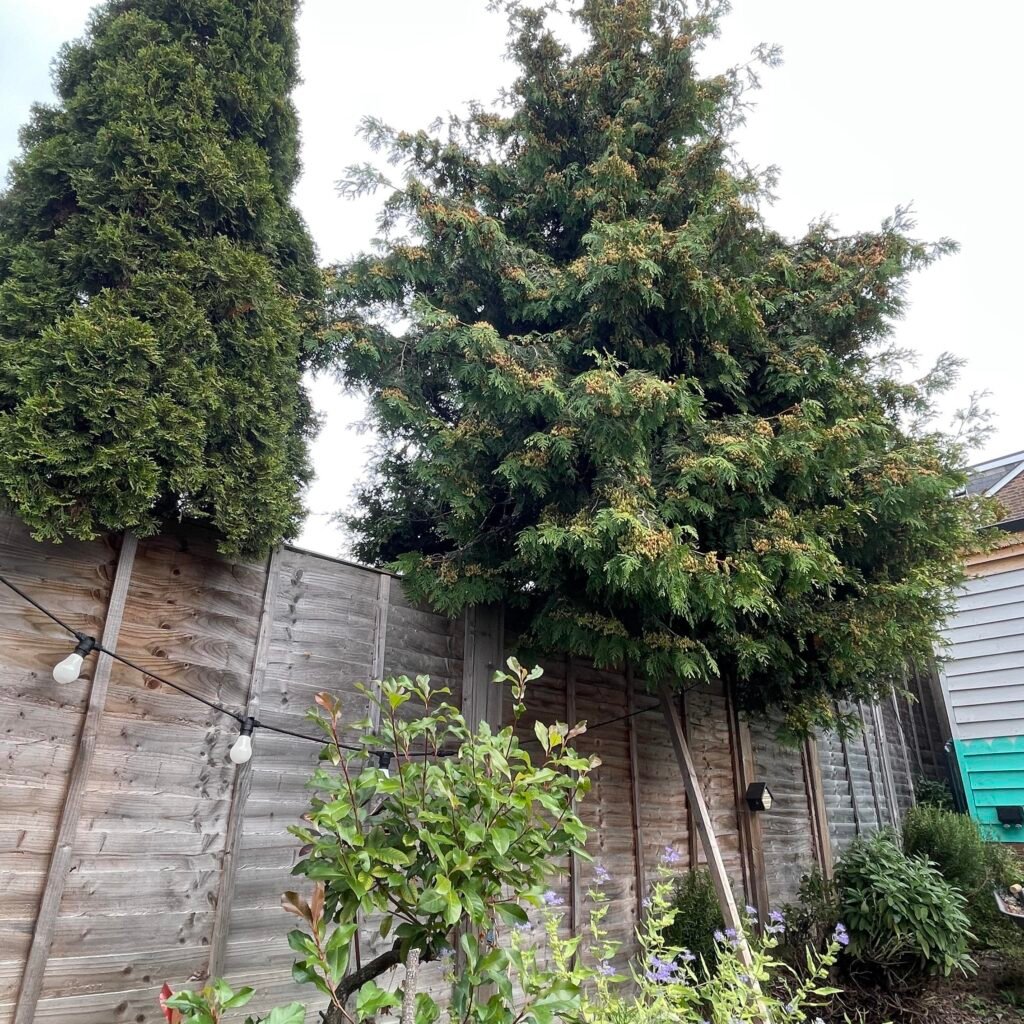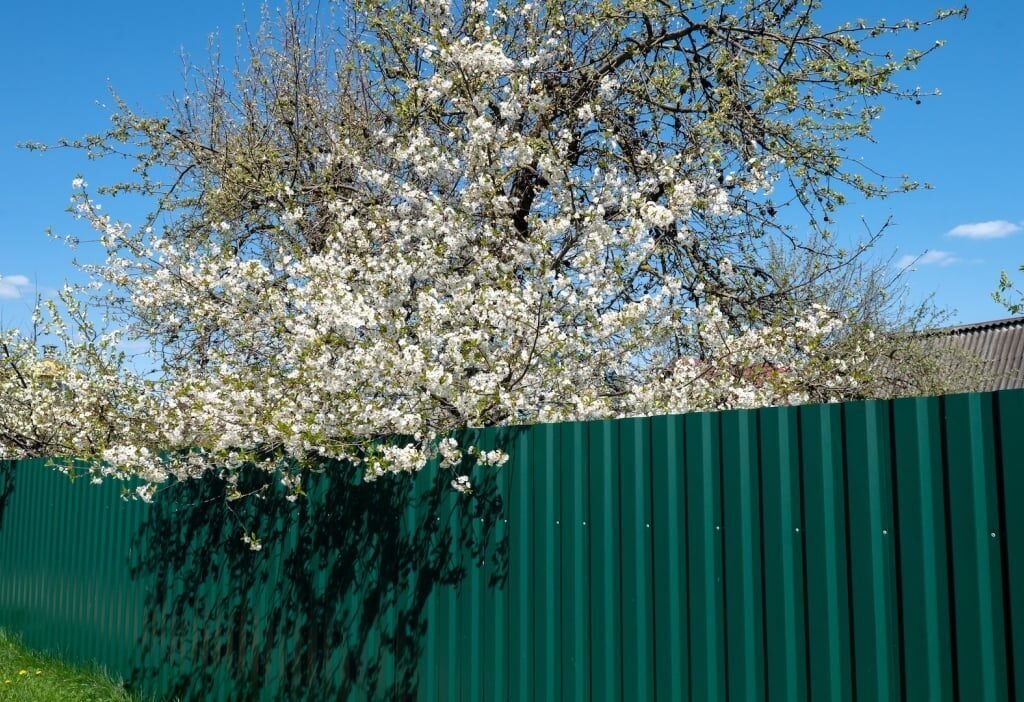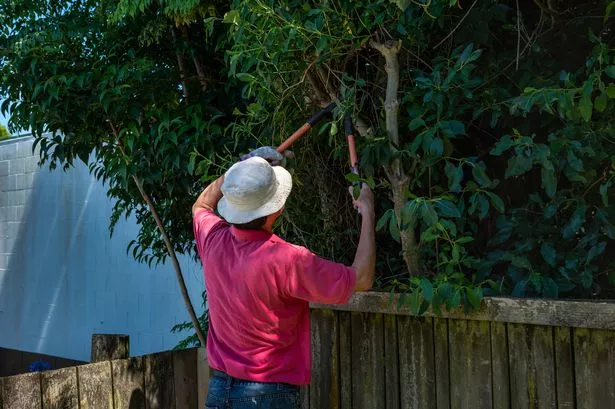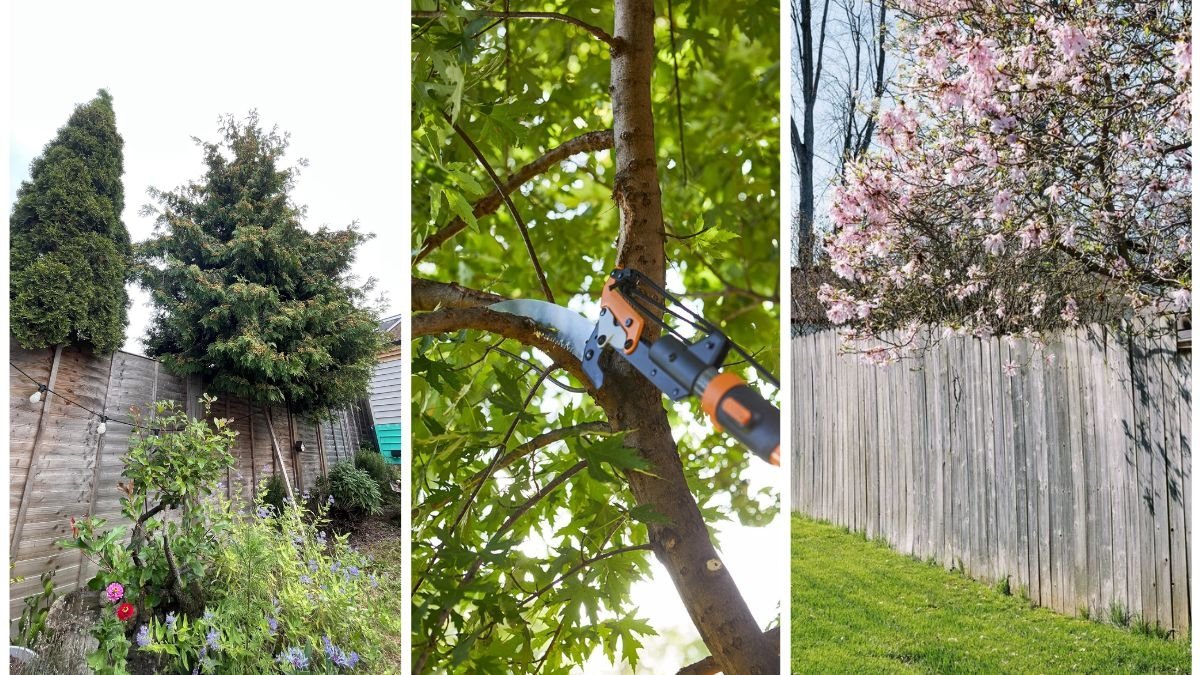Trees are among the most beloved elements of a garden or yard, offering shade, beauty, and even privacy. But what happens when a tree from your neighbor’s property—or even your own—extends its branches over your fence and starts encroaching on your space? Can you trim it? Should you? And what are the legal and practical considerations involved?
In this article, we’ll answer these questions in detail, providing you with a clear understanding of your rights and responsibilities, the best methods for trimming overhanging branches, and how to maintain positive neighborly relations through respectful tree care.
Understanding the Basics: What Does “Overhanging” Mean?

An “overhanging” tree refers to branches that extend beyond the property line, usually crossing a fence or boundary onto the neighboring property. This situation can cause a variety of issues, from shading your garden to dropping leaves, fruit, or debris on your property.
The tree itself usually belongs to the neighbor on whose land it grows, but the branches that extend over your property raise important questions about what you’re allowed to do.
Your Legal Rights to Trim Overhanging Branches
The good news is, in most places, you do have the right to trim branches that extend onto your property — but there are some important caveats.
What You Can Do:
- You can trim back any branches that overhang your property line, up to the boundary.
- You must do so at your own expense.
- You should take care not to harm the health of the tree or cause damage to the neighbor’s property.
- It’s best practice to dispose of the trimmed branches responsibly, usually by returning them to the neighbor or following local disposal regulations.
What You Should Avoid:
- You cannot enter your neighbor’s property without permission to trim the tree.
- You cannot cut branches back beyond your property line or remove the whole tree.
- You should avoid trimming in a way that would harm the tree or damage your neighbor’s property.
- It’s wise to avoid trimming during the bird nesting season or other sensitive times for wildlife.
Local Laws Vary:
While these guidelines are generally true in many jurisdictions, local laws or homeowners’ association (HOA) rules may have additional regulations. For example:
- Some areas require written notice to the neighbor before trimming.
- Some regions regulate trimming near utility lines or protected species.
- In some places, disputes may require mediation or intervention from local councils.
Always check your municipal code or consult a local arborist or legal professional to ensure you comply with local regulations.
How to Approach Trimming Overhanging Branches Respectfully

Tree disputes can strain neighborly relationships, so communication is key.
Steps to Follow:
- Talk to Your Neighbor First: Inform them of the branches overhanging your property and express your concerns politely. They may not be aware of the issue.
- Request Permission: If you need to enter their property or conduct significant trimming, ask for permission.
- Offer to Share Costs: For large jobs or professional pruning, suggest splitting the cost.
- Hire a Professional: Certified arborists have the tools and knowledge to prune safely and without damaging the tree.
- Document Your Actions: Keep records of communications and work done, in case any disputes arise later.
When Should You Trim Overhanging Branches?

Timing matters for both the health of the tree and the wellbeing of local wildlife.
Best Times to Trim:
- Late winter or early spring (before new growth begins) is generally ideal for most trees.
- Avoid nesting season to protect birds and other wildlife.
- In urban areas, check for local guidelines about tree trimming times.
Consider Seasonal Impact:
- Fall trimming can help clean up leaves and prepare the tree for winter.
- Avoid heavy pruning during the heat of summer, which stresses trees.
How to Properly Trim Overhanging Tree Branches
Trimming branches isn’t just about cutting them off—it’s about maintaining tree health and safety.
Essential Pruning Tips:
- Use sharp, clean tools such as pruning shears for small branches or a pruning saw for larger limbs.
- Make clean cuts at the branch collar (the swollen area where the branch meets the trunk or larger limb). Avoid cutting flush with the trunk, which damages the tree.
- Don’t leave stubs, as these invite disease and pests.
- Avoid topping the tree or removing large branches without professional advice.
- If branches are large or the tree is tall, hire an arborist to ensure safety.
What If the Overhanging Tree Causes Damage?

If overhanging branches cause damage to your property (e.g., broken fences, damaged roof, or fallen limbs), the situation becomes more complex.
Steps to Take:
- Notify your neighbor immediately and document the damage with photos.
- Check your homeowners insurance policy to see if the damage is covered.
- Discuss repair responsibilities with your neighbor; often, the tree owner is responsible for damage caused by their tree.
- If disputes arise, you may need to seek mediation, legal advice, or local authority intervention.
Understanding the Boundaries: Tree Roots and Other Issues
While this article focuses on overhanging branches, it’s important to also consider tree roots growing under fences or foundations, which can cause damage or legal issues.
Roots that cross property lines might cause damage to underground pipes, foundations, or sidewalks. Unlike branches, roots are typically harder to manage and may require professional assessment and legal guidance.
How to Protect Your Own Tree from Overhanging Neighbors’ Branches
If your tree’s branches are growing over your neighbor’s property, the same principles apply in reverse. Respectful communication and pruning ensure the health of your tree and good relations.
- Encourage your neighbor to inform you if overhanging branches become a concern.
- Regular pruning can prevent disputes.
- Understand your responsibility to manage your tree so it doesn’t cause damage.
Benefits of Maintaining Proper Tree Boundaries

When done right, trimming overhanging branches provides many benefits:
- Prevents damage to your property and fences.
- Improves sunlight exposure and airflow in your garden.
- Helps maintain tree health by removing dead or diseased branches.
- Supports good neighbor relations through respectful communication.
Final Thoughts: Navigating Tree Trimming with Care and Courtesy
Trimming a tree hanging over your fence is a common garden challenge, but it doesn’t have to be a source of conflict. By understanding your rights, knowing the legal boundaries, communicating openly with your neighbors, and following proper pruning techniques, you can manage overhanging branches safely and amicably.
Remember, trees are living beings that contribute to the beauty and environment of your neighborhood. Caring for them responsibly benefits everyone.
So next time you notice a branch hanging just over the fence, approach it with confidence—and respect—and turn a potential problem into an opportunity for better garden care and stronger community ties.

Leave A Comment